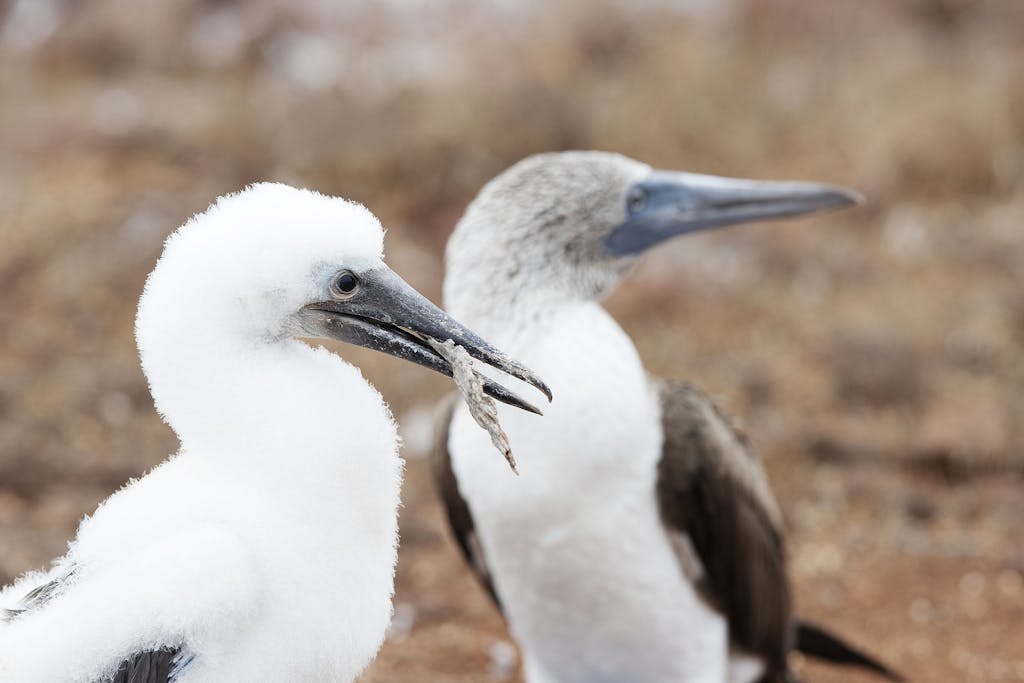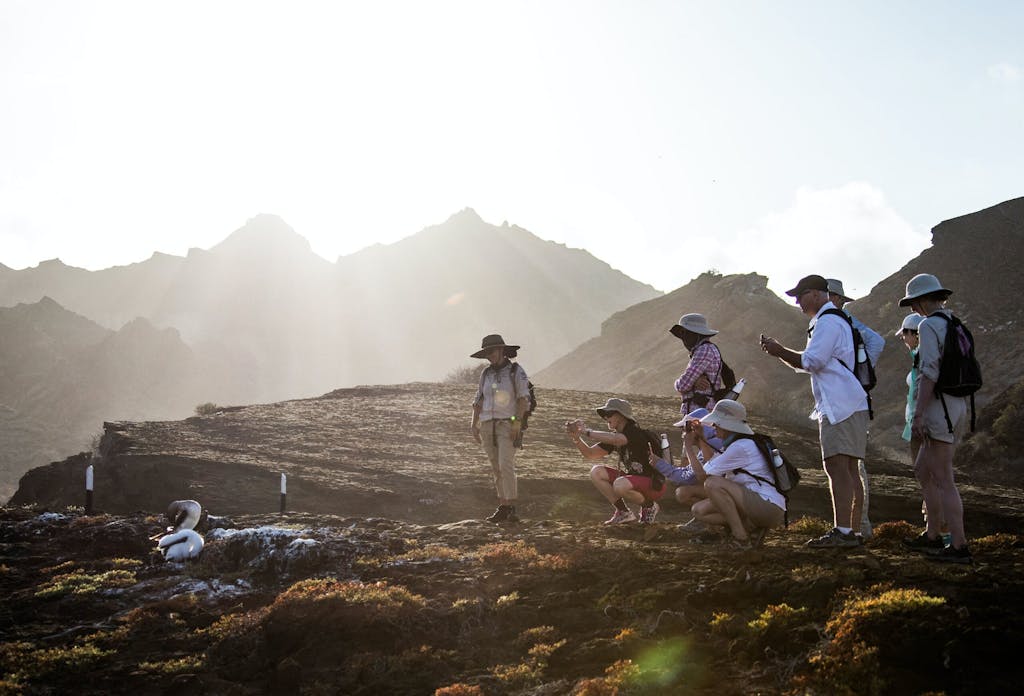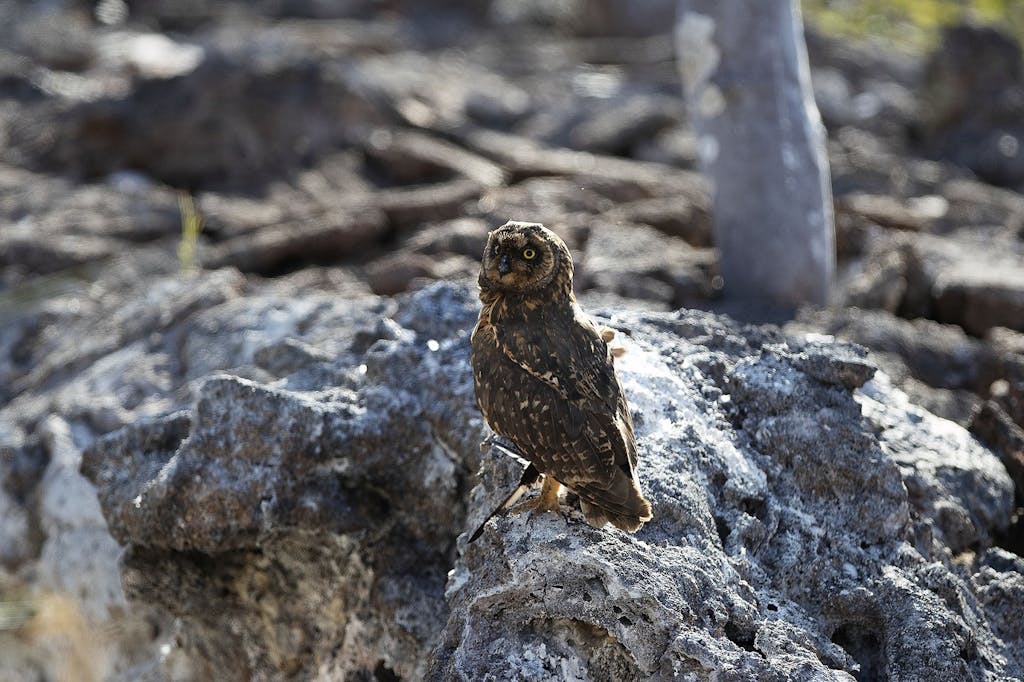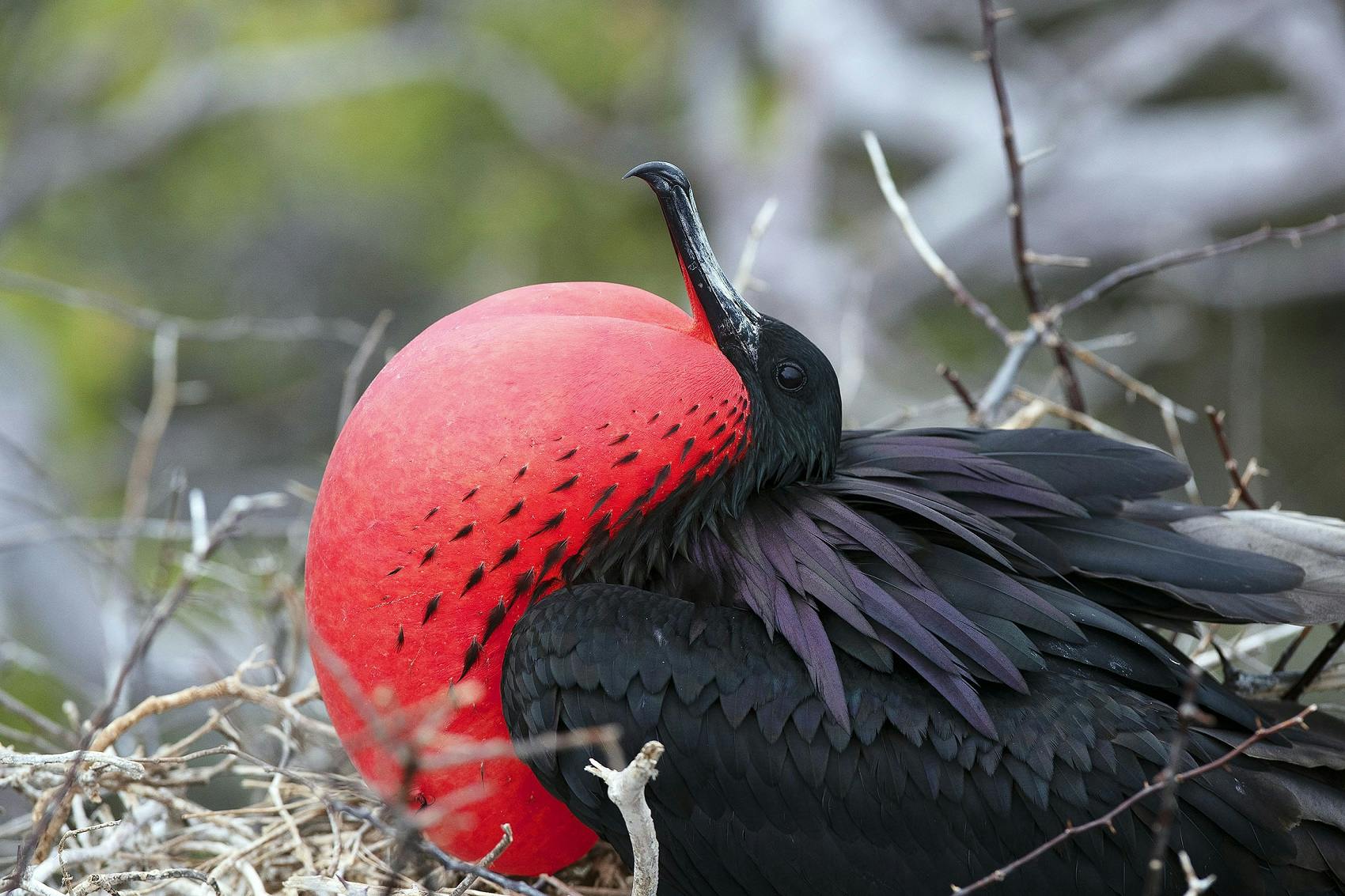Photographic Exploration: Dramatic Images From the Galapagos Islands’ Birds
Of the 183 bird species that inhabit the Galapagos Islands, 27 are endemic to this unique archipelago—some of which were the subject of Charles Darwin’s focus in his famous study of evolution. Here, 1,000km from the western coast of Ecuador, the equatorial skies are awash with vibrant blues, intense reds, and vivid yellows. In the latest installment of Behind the Lens, Silversea Cruises’ Director of Onboard Photography, passionate wildlife photographer, and recently appointed Canon Ambassador Lucia Griggi shares her experience of birdwatching in the Galapagos.
Birdwatching in the Galapagos
In the Galapagos Islands, Griggi listened in wonderment to the birds’ hypnotic chirping in an array of tones. She noted that their behavioral patterns varied between islands and species. She photographed some of the archipelago’s most iconic wings, belonging to Blue-, Red-Footed, and Nazca Boobies; Magnificent Frigatebirds; Flightless Cormorants; Darwin’s Finches; and the Galapagos Penguin, the only penguin species to live north of the equator. As Lucia discovered, the Galapagos Archipelago is a treasure trove for ornithology enthusiasts, who enjoy unique viewing experiences in this biodiverse ecosystem.
“It’s so plentiful, so obtainable, so dense in terms of the sheer number of encounters.”
Lucia Griggi, Director of Onboard Photography and Wildlife Photographer
What makes the Galapagos a unique destination for birdlife? “It’s so plentiful, so obtainable, so dense in terms of the sheer number of encounters,” says Griggi. “The diversity is staggering; it’s as if the animals have been hand-selected for their variety. And they’re always flying with you, around you, at any given moment, as if curious to examine you—human beings—as the outsider. Knowing that many of these birds can only be found here in the Galapagos was a thrill. Whether admiring the ritualistic mating dance of the Blue-footed Boobies on San Cristobal or walking among the rare, endemic Flightless Cormorant on Fernandina, you’re always blown away by the vibrancy of the birdlife.”

Under the Wing of Expert Guides
“Before arriving in the Galapagos, I had never truly appreciated the appeal of birdwatching. I had always noted the beauty of soaring birds, but I’d never learned to study them, to understand them, to enjoy them. From the moment I first stepped foot on the Galapagos and was surrounded by nesting birdlife, I was speechless. I didn’t really know where to point my lens. Learning about these remarkable islands and the various bird species that inhabit them changed my perception of nature. I’ve been converted into an ornithologist and there’s no going back.”
“For this, I must credit the naturalist guides who accompanied us ashore in small groups, pointing out each bird overhead, describing its features, and its behavioral traits. Many of the experts with whom I traveled grew up in the Galapagos Islands and are committed to sharing their home with inquisitive visitors.”
“One such guide, Aura Banda, shared her wealth of knowledge on the Galapagos Islands with me, as we spotted birds one cloudless afternoon. Aura is a third-generation resident of the Galapagos Islands and her family has instilled in her a deep affinity with the animals that live here. Her passion was so inspiring. Aura taught me about the ecology of the archipelago, and how the nutrient-rich waters of the Humboldt Current provided plenty of food for the islands’ birds. And I experienced this first-hand when swimming in the sea at a later point in my trip: a Flightless Cormorant dove into the water and swam right underneath me in search of fish. And these priceless moments occurred regularly throughout the expedition, exemplifying the insight shared by our guides.”

A Lens on the Skies
More accustomed to photographing seals, polar bears, and penguins in Polar Regions, Lucia gladly accepted the challenge of new terrain. Armed with her Canon EOS-1D X Mark II, years of experience in the field, and Aura’s expert tips for photographing birdlife in the Galapagos, Lucia focused her lens on as many feathered creatures as possible over two weeks in the tail-end of 2019. Here are a few of her most memorable interactions:
A Galapagos Short-Eared Owl Catching its Prey
“A standout moment for me was photographing the Galapagos Short-Eared Owl on Prince Philip Steps in Genovesa. With a wing-span of up to one meter, a beautiful coloration, and piercing eyes, the owl is a spectacular sight to behold—especially when it’s in full flight. While we were watching, the bird thrust its powerful wings and caught its helpless prey with its razor-sharp talons. It happened so quickly—this predatory owl exercised its instinctive hunting skills right before our eyes. I’d been told that sighting this endemic animal is incredibly rare, which made the experience all the more exciting.”

Frantic Galapagos Mockingbirds on a White-Sanded Beach
“More impressive still, perhaps, was our encounter with a flock of Galapagos Mockingbirds in Gardner Bay on Española Island. Aura told us that there are four species of Galapagos Mockingbirds on the archipelago—each of which is endemic to the region. They were moving at a mesmerizing speed on the beach’s white sand, singing the most beautiful birdsong I had ever heard. I’d never seen such characterful birds. It was challenging to film because of their small size and their agility. I chose to focus on one of the mockingbirds to capture its beautiful details. Luckily, it remained still long enough for me to take its portrait.”

A Yellow-Crowned Night Heron with a Familiar Expression
“For no reason other than its almost human-like expression, my favorite bird from my experience in the Galapagos was the Yellow-Crowned Night Heron,” says Griggi. “I was particularly struck by a juvenile, which seemed to be in wait for its returning parent. Opting for a cinematic style, I was able to focus on this bird to capture the intimate details of its plumage as it basked in the sunshine. I still look back at my pictures of this heron and recollect my amazement at being in such close proximity to such a beautiful animal. This pays testament to the richness of the birdlife in the Galapagos. I can’t wait to go back and experience it all over again.”

“As a wildlife photographer, you always want to learn and grow with your subjects. Absorbing information from the naturalists in the Galapagos Islands enabled me to do this to a greater extent than I had previously in any other destination,” concludes Griggi.
